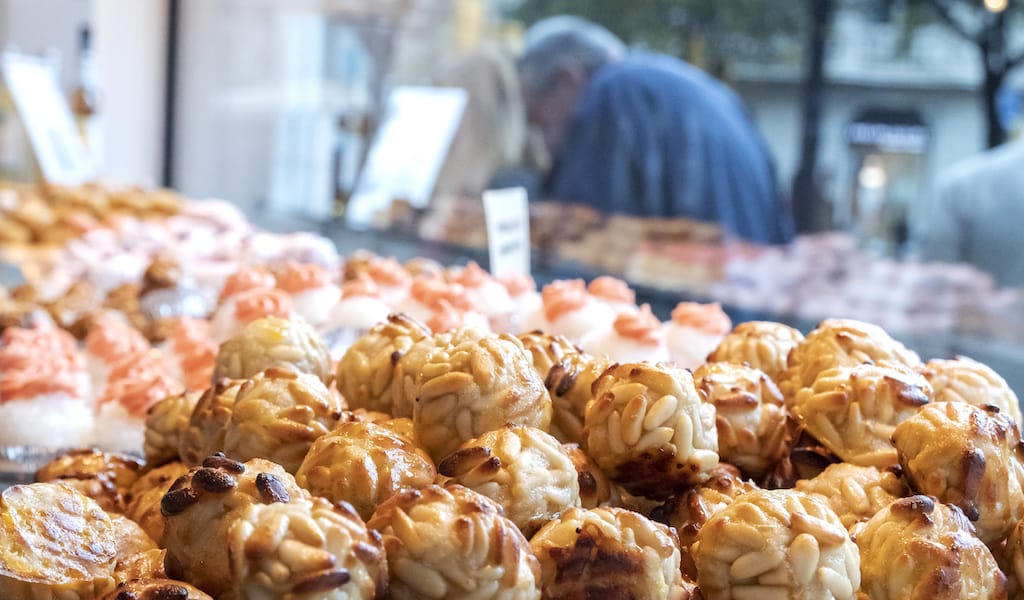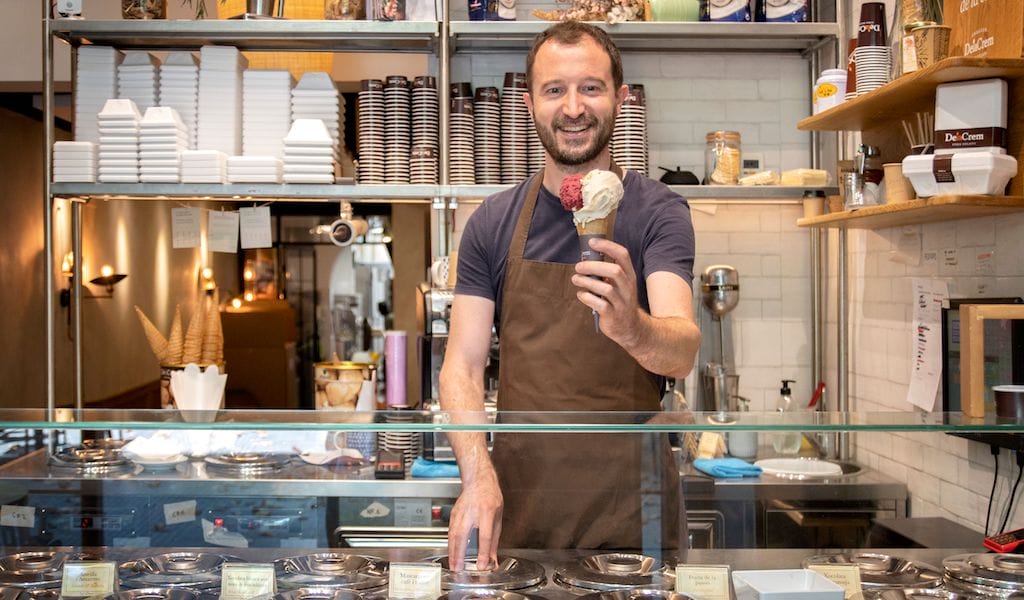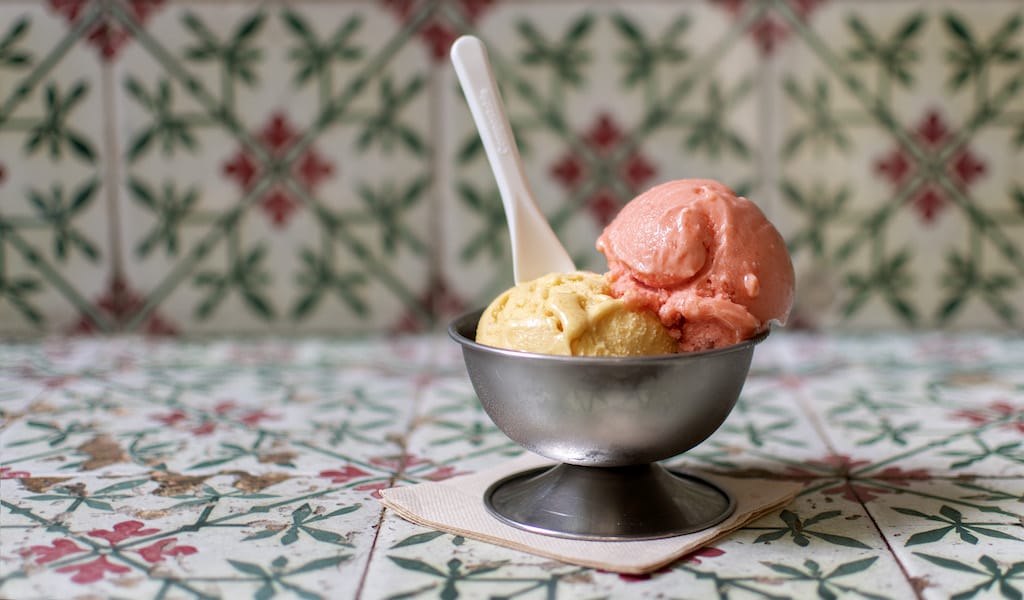Every fall, traditional Catholic families join together to pray and honor the dead, bringing candles and flowers to cemeteries and sharing meals at home. For many, Mexico’s colorful Día de los Muertos (Day of the Dead) celebrations come to mind. In Spain, this type of holiday takes the form of All Saints’ Day, a Christian appropriation of the Celtic Samhain, the night of the dead. It has also become closely connected with the joyful and ancient pagan celebration of the end of the harvest, marked by the festival called Castanyada (in Catalonia) or Magosto (in other parts of Spain). Throughout Spain and Portugal, people gather to eat roasted castañas (chestnuts) and other seasonal foods, drink the first young wine of the year and enjoy the last warm weather before winter.
These traditions of All Saints’ Day have numerous, diverse influences. Chestnuts and acorns – a legacy of the Romans, who were avid planters of these trees – were a main staple in Western Europe before the American corn and potatoes arrived. The Celtic Samhain celebration was making its way into communities under their influence – like the Celtiberians of northern Spain – with their bonfires, walking-dead legends and traditions of connecting the living with those who have passed. All of these elements were adopted during Christianization, becoming ritualized with night masses, bell ringing and cemetery visits to loved ones who have passed away.
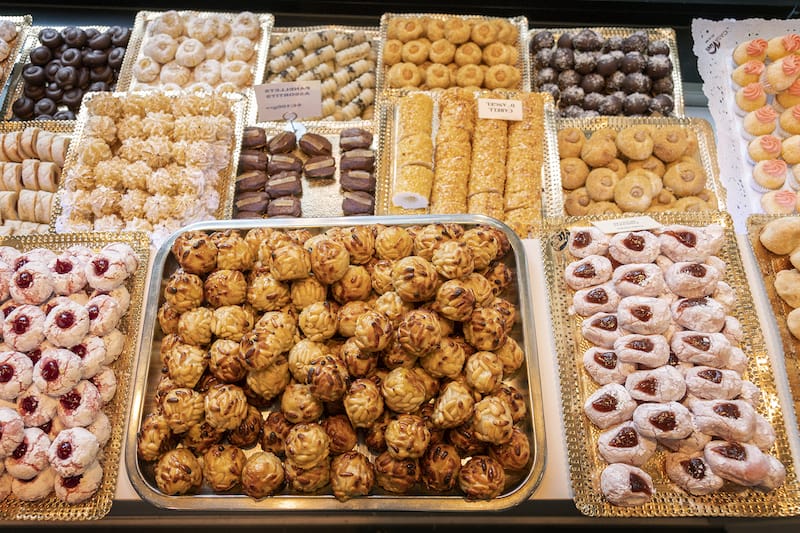
As we explained in a previous piece about All Saints’ Day’s sweets, Spaniards have celebrated the holiday since the Middle Ages, when, in the 9th century, Pope Gregory IV officially established it to commemorate all Christian saints and martyrs. Church bells would ring all night long to honor and remember those who had passed and to call those still in this world to pray. To fortify the bell ringers, those attending church brought with them humble foods – chestnuts, almonds, pine nuts, little sweets, cookies and moscatel or other sweet wine – which, once blessed by the priest, were shared by all.
This year’s Castanyada and All Saints’ Day, or Tots Sants in Catalan, are significant ones, and Catalonia’s Gremi de Pastisseria (patisserie guild) is excited. Its president, Elies Miró, told the media: “This Castanyada will be the first holiday since Christmas 2019 without restrictions. Everybody is willing to gather together and celebrate, with a renewed appreciation for artisanal products made from local ingredients.” He is talking about the sweet jewel of the Castanyada/Tots Sants celebration in Catalonia: the panellet.
Small, round pastries made from marzipan of marcona almonds, panellet are covered in coarse sugar, as well as with aromatic local Mediterranean pine nuts or chopped almonds. Even if three out of every four panellets sold are the pine-nut variety – the local favorite – every year, the patisseries produce more variations on flavors and shapes.
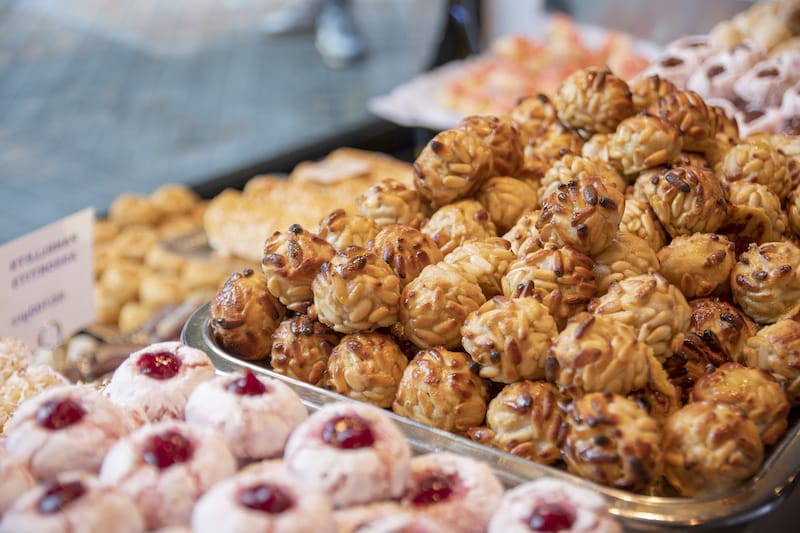
But no discussion of panellets is complete without diving into marzipan. A dough of almonds and sugar first developed in the Al-Andalus caliphates and then produced in a multitude of Catholic convents, marzipan is the essence of the panellets and another traditional All Saints’ sweet, huesos de santo (saints’ bones). As we’ve written before, the European Union’s Traditional Specialties Guaranteed (ETG) guidelines specify that panellets must be made from only egg whites, sugar and ground marcona almonds. The Gremi de Pastisseria and all the patisseries that belong to it insist they strictly follow this traditional recipe, without artificial ingredients or the cost-cutting use of potato and sweet potato to replace the time-honored almond.
Even if three out of every four panellets sold are the pine-nut variety – the local favorite – every year, the patisseries produce more variations on flavors and shapes.
This year, the Gremi de Pastisseria expects to sell around 250,000 kg of panellets in all of Catalonia, both in-shop and – because of the pandemic – even more online than ever before. While some 10 years ago, panellets were generally sold over a two-or-three-day period, currently the season has expanded to encompass a couple of weeks. We are glad to have more time to enjoy this Catalan sweet and appreciate it as a cultural symbol of the European-Celtic celebration – a toast to the end of summer light and the arrival of the dark, cold season.
To taste traditional panellets – or the more innovative ones – a diverse array of patisseries are offering a world of flavors, from the old-school almond, coffee, lemon, chocolate or strawberry to more the modern mango, passion fruit or matcha. They now come in all sorts of shapes, as well as ones that are evocative of the current season: mushrooms, chestnuts or pumpkins.

Casa Vives is a centenarian family-run pastry-shop from 1895. With four generations behind, it was originally a bakery in the Sants neighborhood. Currently, they run two shops in Barcelona and produce some of the most exquisite pastries in the city. For the Castanyada, they offer around 20 varieties of panellets made with natural, local ingredients.

Pastisseria Bonastre, a guild-member and classic 1960s patisserie, ice cream and orxata parlor in the Sant Antoni neighborhood, claims to use only the most natural and traditional local ingredients in all their creations, including the various panellets that decorate their windows these days. We suggest the delicious chocolate-coated ones. Pastisseria Cusachs, from 1963, is another lovely neighborhood patisserie, this time in Gràcia. This week they will be offering 25 different flavors of the most high-quality panallets.
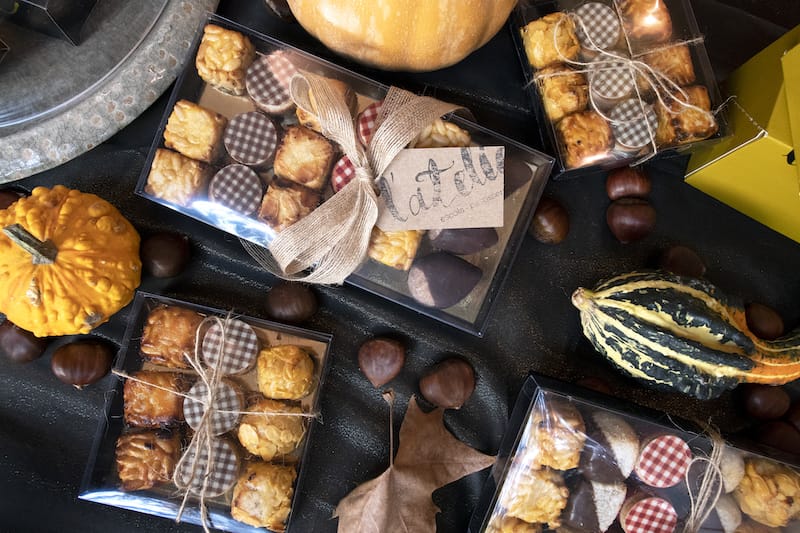
In the L’Esquerra de L’Eixample neighborhood, L’Atelier is a pastry school and shop created by the chefs Enric Ortuño and Ximena Pastor. They offer the cube-shaped pine-nuts panellets that everybody is talking about this year, in combination with other seasonal designs.
Other top panellets can be found at Baluard Barceloneta (Baluard, 38-40), Foix de Sarriá in Sarriá, L’Obrador dels 15 (Passeig de Maragall, 209), Forn Baltá in Sants (Carrer de Sants, 119) or Baixas (Muntaner 331) and Canal (Muntaner 566) in Sant Gervasi.
 January 4, 2022 In Love Again
January 4, 2022 In Love Again
It was a late night in 2009 when Thanos Prunarus finished his shift at Pop, a […] Posted in Athens August 24, 2021 The Frozen Few
August 24, 2021 The Frozen Few
Generations of inhabitants of the modern-day Italian peninsula may have learned the art […] Posted in Barcelona August 10, 2021 The Frozen Few
August 10, 2021 The Frozen Few
My memories of helados (ice cream) as a kid in the small Galician town of Vigo in the […] Posted in Barcelona
Published on November 01, 2021
Related stories
January 4, 2022
AthensIt was a late night in 2009 when Thanos Prunarus finished his shift at Pop, a now-shuttered bar in Athens’ historical center on the tiny Klitiou pedestrian street. He was just a few steps out the door when he spotted a “For Rent” sign taped to the front of an old, empty store. This area…
August 24, 2021
BarcelonaGenerations of inhabitants of the modern-day Italian peninsula may have learned the art of aromatized ices and frozen fruits and puddings from the East (China, Persia, etc.) – perhaps it was the Ancient Romans or Marco Polo or the Crusaders who introduced some variation of these cold treats. But it is the Italian Francesco Procopio…
August 10, 2021
BarcelonaMy memories of helados (ice cream) as a kid in the small Galician town of Vigo in the 80s are mostly of the signs outside kiosks advertising Colajets (a cola and lemon flavored popsicle) and Frigo Pies (strawberry ice cream shaped like a foot) – colorful, industrial fantasies on a stick. The quality ice creams…







































